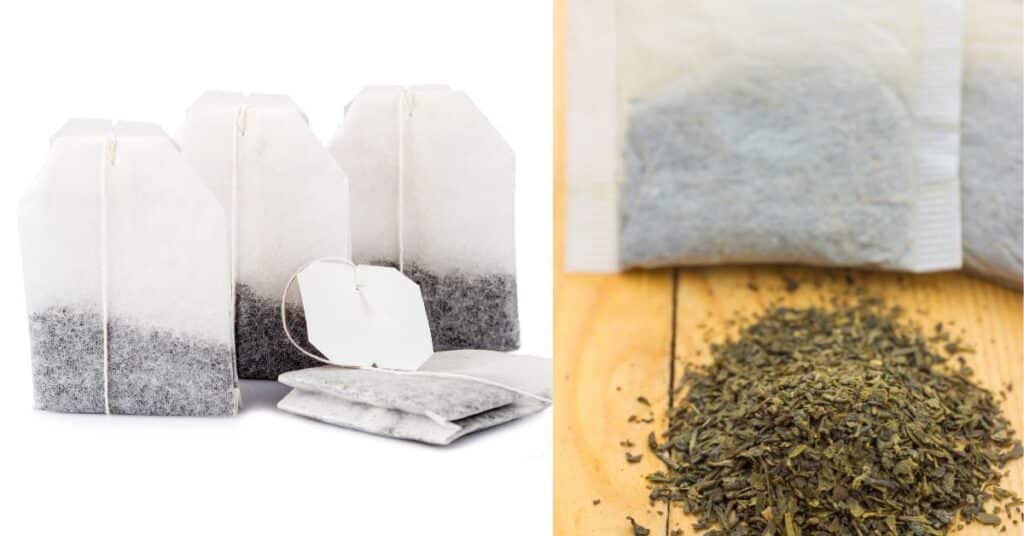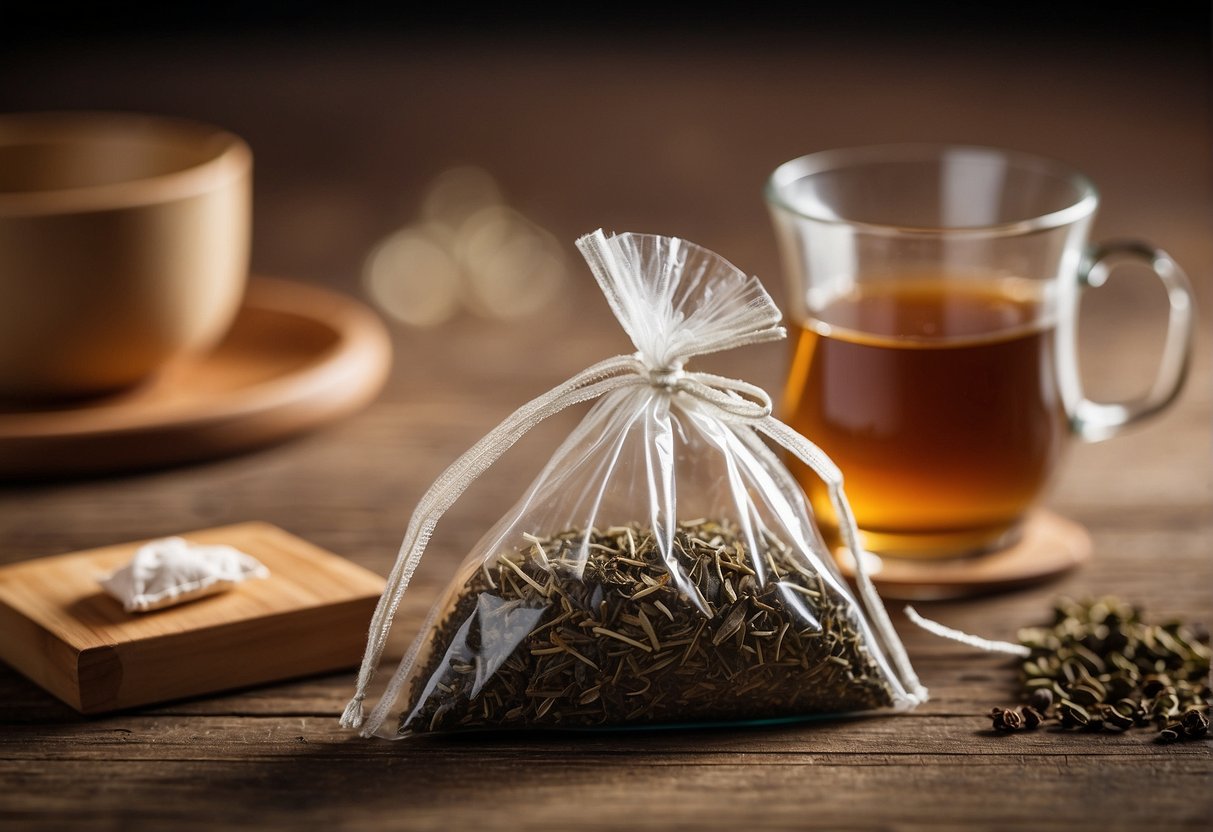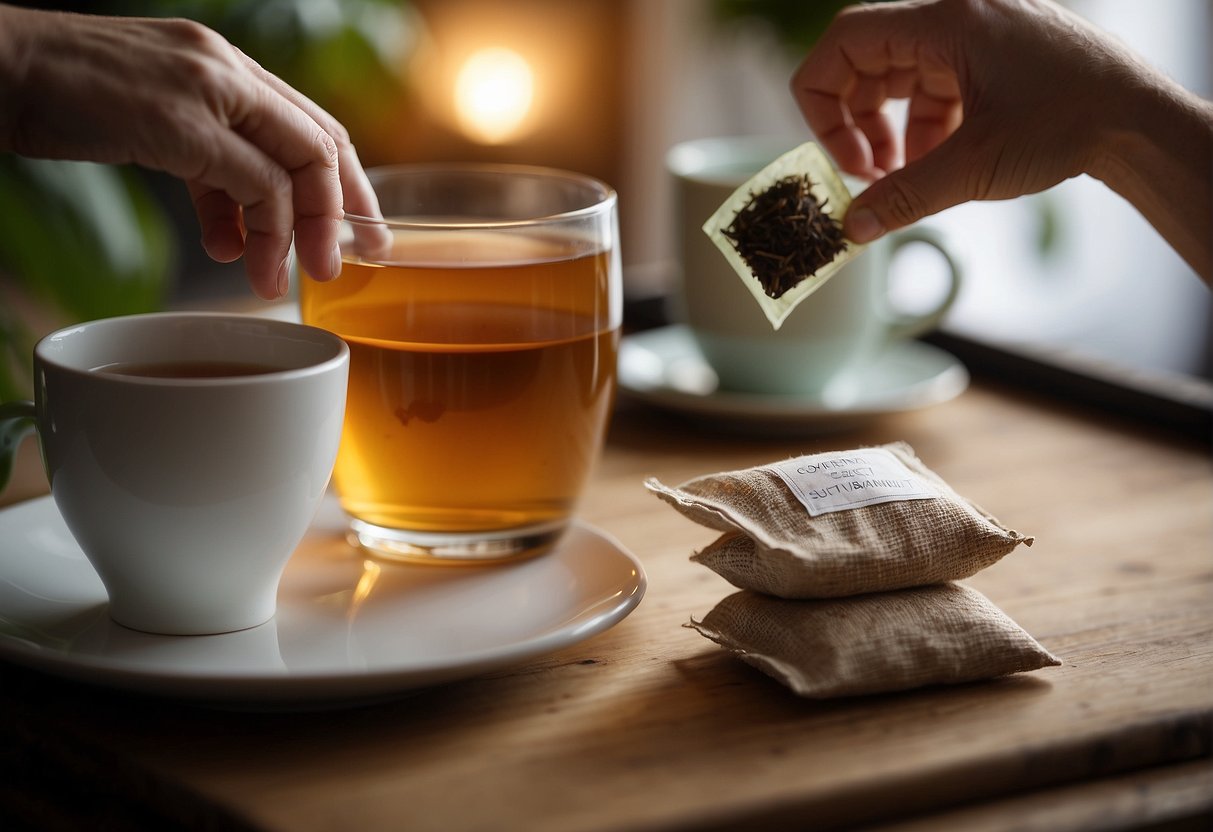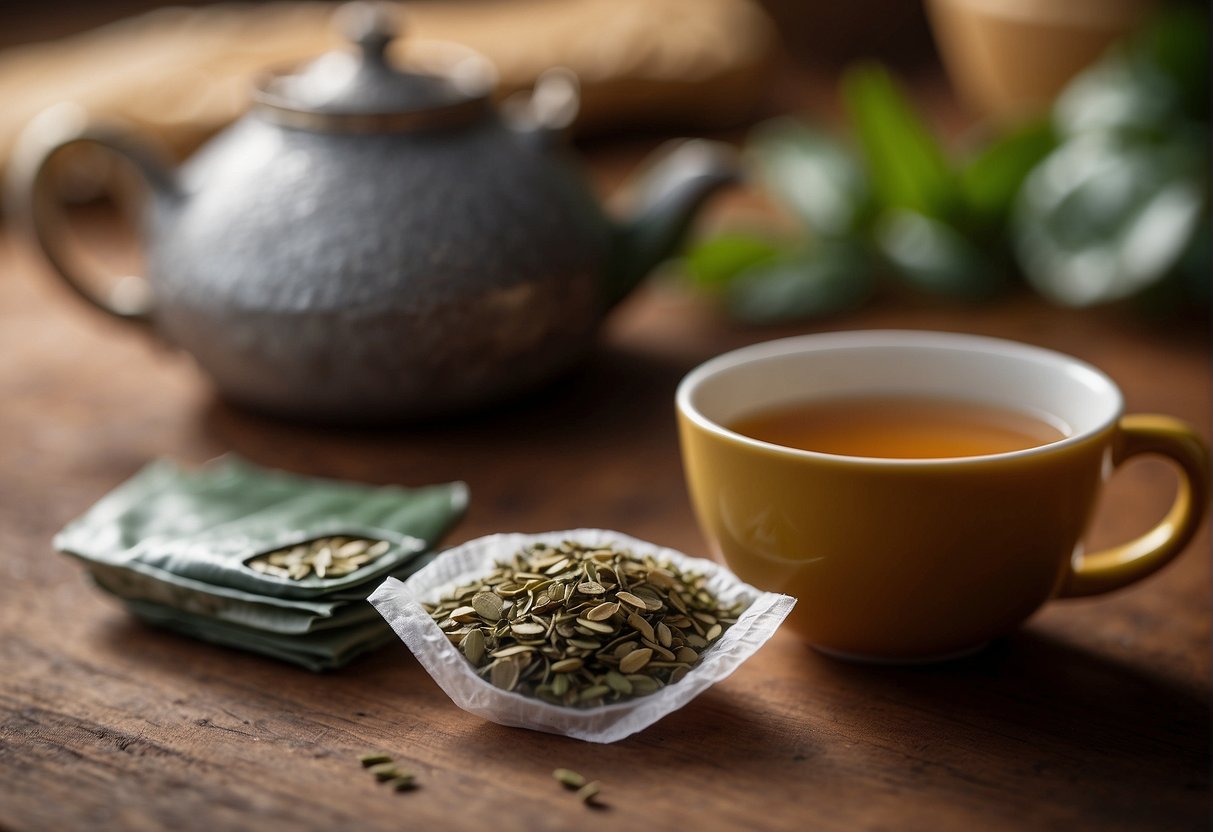When you think about enjoying a warm cup of tea, the image that often comes to mind is that of a cozy teapot and a steamy mug. But before you can savor the flavors and aromas, you face a choice: will you reach for a tea bag or a sachet? This decision may seem trivial, but the distinction between the two can significantly affect your tea-drinking experience.

Tea bags, the more common option found in many households, are known for their convenience and simplicity. They typically consist of a small, porous bag containing crushed leaves, which easily infuse when submerged in hot water. Sachets, on the other hand, are often considered a premium alternative. They usually contain larger tea leaves and can come in high-quality, pyramid-shaped bags that allow more room for the leaves to expand, resulting in a more robust flavor profile.
Understanding the differences between sachets and tea bags can elevate your tea time by aligning your choice with your taste preferences and the experience you’re looking for. Whether you desire a quick, comforting brew or an indulgent tea ceremony, becoming familiar with these options will help you tailor your tea moments to your liking.
Defining Tea Bags and Sachets
Tea bags are small, porous bags containing tea leaves used for steeping tea. The typical tea bag is made of paper fiber. Your standard tea bag is shaped like a rectangle or square and is known for its convenience and ease of use. You simply place it in your cup, add hot water, and your tea begins to infuse.
Sachets, on the other hand, hold tea like traditional tea bags but are often made of a finer, silk-like mesh. A tea sachet generally contains higher-quality leaves compared to traditional tea bags, allowing more space for the leaves to expand and release flavor. They come in various shapes, with the pyramid-shaped bags being quite popular.
To help you better understand, here’s a quick comparison:
| Feature | Traditional Tea Bag | Tea Sachet |
|---|---|---|
| Shape | Rectangle/Square | Pyramid/Rectangular |
| Material | Paper fiber | Silk-like mesh |
| Tea Quality | Typically lower | Usually higher |
| Infusion | Limited space for leaves | More room for expansion |
Tea sachets and pyramid-shaped bags especially, allow the water to flow through more effectively and the tea leaves to unfurl fully, which results in a richer brew. So, next time you’re deciding between a sachet or a traditional tea bag, consider the quality and experience you’re looking for in your cup of tea.
Brewing Differences Between Sachets and Tea Bags
When choosing between sachets and tea bags for your tea, consider how they differ in terms of the steeping process, the release of flavor, and the space for tea leaves to expand.
Steeping Process
The steeping process is key in determining the quality of your brewed tea. Sachets, typically made of silk or fine mesh, allow for better water circulation around the tea leaves, resulting in a more even steep and, consequently, a more uniform infusion of flavors. On the other hand, traditional tea bags often restrict water flow due to their finer paper material and cramped space, which can lead to less efficient flavor extraction.
Flavor Release
During brewing, the release of flavors, depth, and aroma is paramount. Sachets have a distinct advantage because they tend to contain higher quality and larger tea leaves, allowing for a fuller depth of flavor and a richer aroma. The larger size of the sachets themselves provides more surface area, helping to release the tea’s full spectrum of flavors. With standard tea bags, the finer cut of the leaves typically used can speed up the brewing time but may also release more tannins, resulting in a possible bitterness if steeped too long.
Tea Leaf Expansion
A crucial aspect of brewing loose-leaf tea is allowing the leaves enough space to unfurl and expand, which in turn maximizes flavor. Sachets are designed with extra space to accommodate this expansion, ensuring that you experience the full flavor and aroma the tea has to offer. In contrast, the compact nature of tea bags may restrict this expansion, potentially leading to a less flavorful cup. It is important to provide the tea leaves with ample room for expansion to achieve the best possible brew.
Quality and Type of Tea

When considering sachets versus tea bags, the quality and type of tea are paramount. You’ll find that there’s a noticeable difference in the contents of each, which in turn influences your tea experience.
Quality of Ingredients
Sachets often contain higher-quality tea leaves, usually larger or whole-leaf varieties. This generally equates to a richer flavor and a more nuanced profile for your cup. In contrast, traditional tea bags tend to contain smaller fragments of leaves, such as broken leaves or tea dust, which can result in a more bitter taste due to the higher surface area exposing more tannins upon brewing.
- Sachets: Often whole tea leaves
- Tea Bags: Mostly broken leaves or tea dust
Tea Leaf Form
The form of the tea leaf is a crucial aspect of its quality. Whole tea leaves are considered superior because they retain their natural shape and have undergone less processing. This allows them to unfurl in hot water, releasing a full, complex flavor. In sachets, you’re more likely to find whole leaves, while broken leaves are more common in tea bags.
- Whole Leaves: Unfurl during steeping, enhancing flavor.
- Broken Leaves: May lead to a quicker but potentially more bitter brew.
Essential Oils and Aroma
Essential oils within the tea leaves are responsible for the aroma and a significant portion of the taste. These oils are best preserved in whole-leaf teas, which sachets prominently feature, allowing for a more aromatic and flavorful experience. The crushing of leaves in tea bags can expedite the loss of these oils, diminishing the tea’s aroma and flavor potency over time.
- Whole Leaf Sachets: Maintain essential oils, ensuring a vibrant aroma.
- Tea Bag Leaves: Crushed leaves may reduce aroma and flavor intensity.
Convenience and Sustainability
When choosing between sachets and tea bags, you’ll want to consider both how easy they are to use and their environmental footprint.

Ease of Use
Sachets, often more spacious than traditional tea bags, allow for better water flow and expansion of tea leaves, potentially creating a more flavorful cup. In contrast, tea bags can be more restrictive, but they’re a staple for quick preparation. Tea balls and infusers are a third option and can be filled with loose-leaf tea, striking a balance between the convenience of tea bags and the quality of tea sachets.
- Tea ball/Infuser: Might require more cleanup.
- Tea sachet/Bag: Designed for single-use convenience; no extra tools needed.
Environmental Impact
The trend toward sustainability has influenced the tea industry in cities like Paris and beyond, pushing for alternatives to traditional tea bags, which often contain plastics. Compostable tea bags and sachets are emerging to mitigate this issue.
- Compostable Sachets: Usually made of natural materials like cornstarch, better for composting.
- Traditional Tea Bags: These may contain plastics, which are more challenging for the environment.
If you are seeking eco-friendliness in your tea consumption choices, you might lean towards compostable sachets or using a reusable tea ball or infuser with loose-leaf tea, which generates less waste.
Health Benefits and Cost

When choosing between sachet teas and tea bags, you should consider their nutritional content and the cost.
Nutritional Content
Tea, regardless of its packaging, offers a range of health benefits, largely due to the presence of antioxidants. These antioxidants can help reduce oxidative stress and may lower your risk of certain chronic diseases. However, the quality of tea leaves and the manufacturing process can affect the nutrient levels. Sachets often contain whole tea leaves, which can result in a higher concentration of antioxidants compared to the typically smaller leaves or tea dust found in traditional tea bags. Therefore, sachets might offer a more potent health benefit per serving.
Price Comparison
The cost of tea is influenced by the quality of ingredients and the packaging used. Sachets are generally more expensive than traditional tea bags because they contain higher-quality leaves and the packaging material is often designed to preserve the tea’s flavor and aroma better. Here’s a simple comparison:
- Standard Tea Bags:
- Cheaper
- Mass-produced
- May contain lower-quality tea
- Tea Sachets:
- Pricier
- Higher-quality tea
- Needle-sewn or pyramid-shaped for better infusion
In summary, with sachets, you’re paying for superior quality and enhanced potential health benefits, while standard tea bags offer a more budget-friendly yet possibly less beneficial option.
Frequently Asked Questions
What’s the difference between a tea sachet and a traditional tea bag?
A tea sachet is typically larger than a traditional tea bag, offering more space for the tea leaves to expand and release their flavor. Sachets often contain higher quality, larger tea leaves compared to the smaller, broken leaves usually found in traditional tea bags.
How do you properly use a tea sachet for brewing?
To brew using a tea sachet, place it in your cup or pot and pour hot water over it. Steep it for the time recommended for the type of tea you’re brewing. Gently agitate the sachet to allow the water to circulate through the leaves for optimal infusion.
What amount of tea is typically contained in one sachet?
One tea sachet usually contains between 1.5 to 3 grams of tea, enough for one cup. The exact amount can vary depending on the brand and the type of tea.
Can you create your own tea sachets, and if so, how?
Yes, you can create your own tea sachets by using loose-leaf tea and filling empty sachets or self-seal tea bags available from many specialty shops. Fill with your desired amount of tea leaves and ensure the sachet is securely closed before use.
What types of materials are used for Harney and Sons tea sachets?
Harney and Sons tea sachets are known for using high-quality materials such as silk or food-grade nylon, which allow for better water flow and expansion of the tea leaves than traditional paper tea bags.
What are the benefits of using loose-leaf tea compared to tea sachets and tea bags?
Using loose-leaf tea provides a fresher, fuller flavor, as the leaves are typically larger and less processed. It also allows for more control over the amount of tea used and can be more cost-effective and environmentally friendly, as it generates less waste without the need for bags or sachets.


